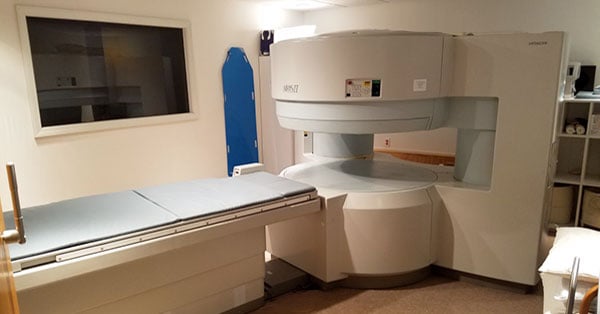
Getting a new open MRI scanner can be exciting: new capabilities, new ways to serve patients, and (maybe) eligibility for new reimbursements. But, before you go out and make an equipment purchase, you'll need to contain your excitement for a little while and sort out some logistics. Namely, you'll need to make sure just how much scanner your facility's infrastructure can handle.
With that need-to-know in mind, we've compiled the table below to show you the approximate system weight of the most popular open MRI scanners.
Open MRI Scanner System Weights
| Scanner Model | Magnet Strength (Tesla) | Approx. Weight (lbs.) |
| GE Openspeed | 0.7 | 21,000 |
| GE Ovation | 0.35 | 44,000 |
| GE Profile | 0.2 | 20,000 |
| Hitachi Airis II | 0.3 | 34,000 |
| Hitachi Airis Elite | 0.3 | 34,000 |
| Hitachi Airis Mate | 0.2 | 17,000 |
| Hitachi Altaire | 0.7 | 90,000 |
| Hitachi Aperto | 0.4 | 30,000 |
| Hitachi Oasis | 1.2 | 34,000 |
| Philips Panorama | 0.23 | 29,000 |
| Philips Panorama | 0.6 | 83,000 |
| Philips Panorama 1.0 | 1.0 | 15,000 |
| Siemens Concerto | 0.2 | 25,000 |
| Siemens Magnetom C! | 0.35 | 35,000 |
| Toshiba Opart | 0.35 | 25,000 |
Although open MRI scanners generally have a smaller footprint than closed systems, that doesn't mean the process of getting one into your facility will bear any fewer considerations. Even the lightest open MRI scanner is still an extremely heavy piece of equipment. As you enter the process of choosing the best open MRI for your facility, be sure that a consultation with a qualified building contractor is a part of that process.
Need More Info?
Whether you're still on the fence about open MRI or ready to get started on planning your new suite, we have other blogs and guides that can tell you more about what to expect.

Jeremy Block
Jeremy Block is the Senior Vice President of Product Solutions at Block Imaging. Jeremy’s goal is to make your buying or selling experience as easy as possible. Outside of work, Jeremy enjoys Michigan State football, and spending time with his wife and kids.




